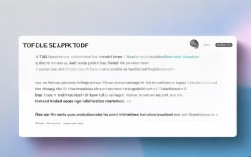下面我将为你详细解析PET口语考试的结构、评分标准、各部分技巧、备考建议和常用语料,希望能帮助你高效备考。

考试结构与时间
PET口语考试通常有 两位考生 和 两位考官 一起进行。
- 考官1 (Interlocutor): 负责引导整个考试流程,不参与打分。
- 考官2 (Assessor): 只在一旁聆听和观察,根据评分标准为两位考生分别打分。
考试总时长约为 16-17分钟,分为四个部分:
| 部分 | 名称 | 时长 | 形式 | 目的 |
|---|---|---|---|---|
| Part 1 | Interview | 约3分钟 | 考生与考官一对一问答 | 热身,了解个人信息,兴趣爱好等 |
| Part 2 | Long Turn (个人陈述) | 约6分钟 (每人1分钟) | 考生轮流就图片进行1分钟描述 | 考察个人描述、组织语言和持续表达的能力 |
| Part 3 | Collaborative Task (协作任务) | 约4分钟 | 两位考生根据图片和提示进行讨论 | 考察互动、沟通、协商和达成共识的能力 |
| Part 4 | Discussion (深入讨论) | 约3分钟 | 两位考生与考官围绕Part 3话题进行更深入的讨论 | 考察表达和论证观点的能力,以及与考官的互动 |
评分标准
考官会从以下四个维度来评估你的表现,每个维度满分5分。
-
Grammar and Vocabulary (语法和词汇):
- 语法: 能否正确使用时态(尤其是过去时和现在完成时)、情态动词、连词等,句子结构是否多样,避免总是用 "I like..." "I think..." 这样的简单句。
- 词汇: 能否使用与话题相关的、准确的词汇,词汇量是否丰富,能否尝试使用一些不那么常见的词或短语(如用
fascinating代替interesting)。
-
Discourse Management (语篇管理/话语组织):
- 流利度: 表达是否流畅,停顿是否自然、短暂,是否因找不到词而频繁卡壳。
- 连贯性: 话语是否有逻辑,能否用连接词(如
and, but, so, because, however, first of all, in addition)把句子和想法串联起来,让听者容易理解。
-
Pronunciation (发音):
- 清晰度: 单词发音是否清晰,考官能否听懂。
- 语调: 句子是否有自然的升调(一般疑问句)和降调(陈述句),重音是否正确(单词重音和句子重音)。
- 节奏: 说话的节奏是否自然,像母语者一样有快有慢,而不是一个词一个词地蹦。
-
Interactive Communication (互动沟通):
- 互动: 是否积极回应对方,使用一些互动性短语(如
What do you think?,That's a good point.,I agree with you.)。 - 回应: 能否听懂对方的问题和观点,并做出相关、恰当的回答。
- 策略: 当听不懂或需要思考时,能否使用一些策略来争取时间(如
That's an interesting question, let me think...,Well, I suppose...)。
- 互动: 是否积极回应对方,使用一些互动性短语(如
各部分高分技巧与范例
Part 1: Interview (自我介绍与问答)
- 目标: 展现你自信、乐于交流的一面。
- 技巧:
- 考官问什么,答什么,并主动多说。 不要只回答 "Yes" 或 "No"。
- 考官: "Do you like reading?"
- 低分回答: "Yes, I do."
- 高分回答: "Yes, I do. I'm really into science fiction novels. They take me to another world."
- 使用拓展句式:
I like... because...I'm quite keen on...It's a great hobby because...What about you?(把话题抛给同伴)
- 准备常见话题: 家人、朋友、家乡、工作/学习、兴趣爱好、周末/假期、食物、电影/音乐等。
- 考官问什么,答什么,并主动多说。 不要只回答 "Yes" 或 "No"。
Part 2: Long Turn (个人图片描述)
-
目标: 在1分钟内,有条理地描述图片,并给出个人观点。
-
技巧:
- 结构化你的描述 (1-2-3原则):
- (1) What can you see? (描述画面内容)
- (2) What is happening? (描述正在发生的事情)
- (3) How do you feel / What do you think? (给出个人感受或看法)
- 利用准备时间: 考官会给你看图片30秒,这30秒非常宝贵!快速在脑中或草稿纸上记下3-4个关键词。
- 使用描述性语言:
In the picture, I can see...On the left/right, there is/are...It looks like they are...(猜测动作)I think this is a... place(猜测地点)The atmosphere seems...(描述氛围,如lively,relaxed,busy)
- 范例 (描述一张朋友在野餐的图片):
"In this picture, I can see two friends having a picnic in a park. On the left, there's a red blanket with some food and drinks on it. The two people are sitting on the blanket, smiling and talking to each other. It looks like they're enjoying a beautiful sunny day. I think this is a great way to relax. It seems very peaceful and happy. I would love to be there with them."
- 结构化你的描述 (1-2-3原则):
Part 3: Collaborative Task (协作讨论)
-
目标: 和你的搭档一起讨论,并尝试达成共识,这是展示你互动能力的关键部分。
-
技巧:
- 积极互动,主动发言: 不要等对方说完了再说,可以说 "Shall we start?" 或 "What do you think about this picture?"
- 询问和回应对方:
What's your opinion?Do you agree?That's a good point, but...(礼貌地提出不同意见)I see what you mean.
- 使用功能性语言:
- 提出建议:
Why don't we...?,How about...?,I think we should... - 表示同意:
I agree with you.,That's exactly what I was thinking. - 表示不同意:
I see your point, but...,I'm not sure about that because... -
So, it seems we both agree that...
- 提出建议:
- 范例 (讨论图片中哪个地方最适合建新图书馆):
A: "I think the old town hall would be a good place for the new library. It's a big building, so there would be enough space for books and reading areas." B: "That's a good point. It is quite central. However, it might be too noisy with all the tourists around. What about the park? It's much quieter." A: "Hmm, that's true. The park is peaceful, but I'm worried about the weather. What if it rains? Maybe we should choose a building after all." B: "You're right. So, we agree that a building is better, but not the town hall. What about the old school building? It's away from the noise and has big windows."
Part 4: Discussion (深入讨论)
- 目标: 在Part 3的基础上,更深入地讨论话题,表达和论证自己的观点。
- 技巧:
- 与考官进行眼神交流。
- 给出理由和例子: 当被问 "Why?" 或 "What are the advantages?" 时,不要只说 "It's good.",要解释为什么。
"I think reading is important because it can improve your vocabulary and knowledge."
- 拓展话题: 考官可能会提出一个新问题,把它和你之前的观点联系起来。
- 礼貌地结束: 当考官说 "Thank you" 时,微笑着说 "You're welcome. Thank











